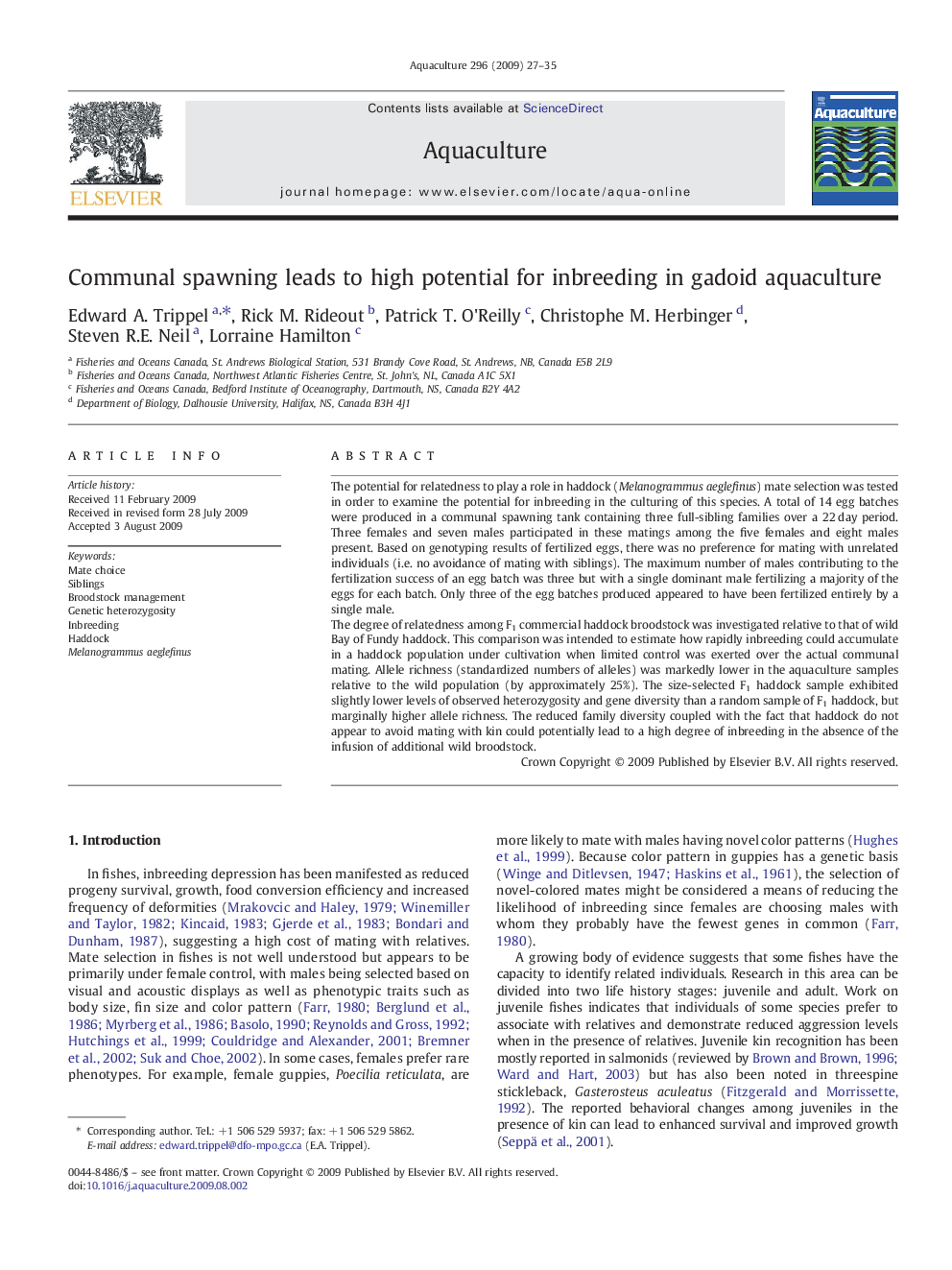| کد مقاله | کد نشریه | سال انتشار | مقاله انگلیسی | نسخه تمام متن |
|---|---|---|---|---|
| 2423877 | 1552935 | 2009 | 9 صفحه PDF | دانلود رایگان |

The potential for relatedness to play a role in haddock (Melanogrammus aeglefinus) mate selection was tested in order to examine the potential for inbreeding in the culturing of this species. A total of 14 egg batches were produced in a communal spawning tank containing three full-sibling families over a 22 day period. Three females and seven males participated in these matings among the five females and eight males present. Based on genotyping results of fertilized eggs, there was no preference for mating with unrelated individuals (i.e. no avoidance of mating with siblings). The maximum number of males contributing to the fertilization success of an egg batch was three but with a single dominant male fertilizing a majority of the eggs for each batch. Only three of the egg batches produced appeared to have been fertilized entirely by a single male.The degree of relatedness among F1 commercial haddock broodstock was investigated relative to that of wild Bay of Fundy haddock. This comparison was intended to estimate how rapidly inbreeding could accumulate in a haddock population under cultivation when limited control was exerted over the actual communal mating. Allele richness (standardized numbers of alleles) was markedly lower in the aquaculture samples relative to the wild population (by approximately 25%). The size-selected F1 haddock sample exhibited slightly lower levels of observed heterozygosity and gene diversity than a random sample of F1 haddock, but marginally higher allele richness. The reduced family diversity coupled with the fact that haddock do not appear to avoid mating with kin could potentially lead to a high degree of inbreeding in the absence of the infusion of additional wild broodstock.
Journal: Aquaculture - Volume 296, Issues 1–2, 1 November 2009, Pages 27–35